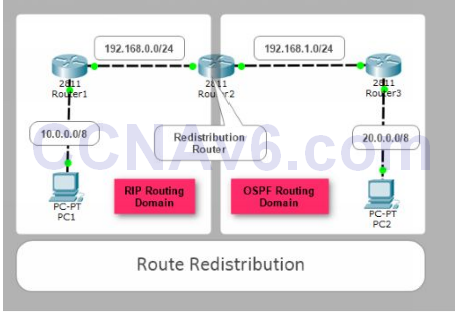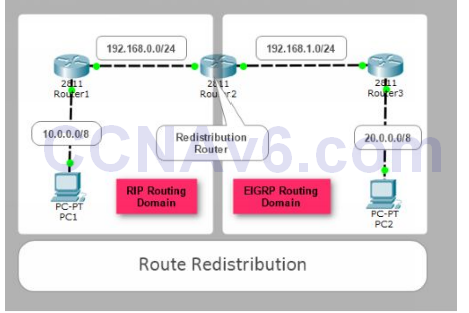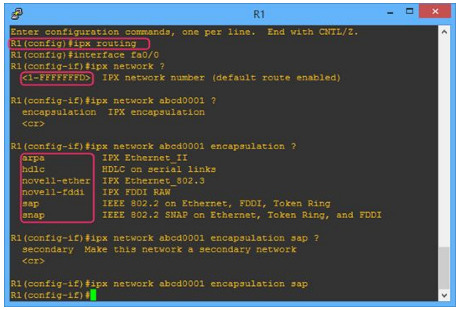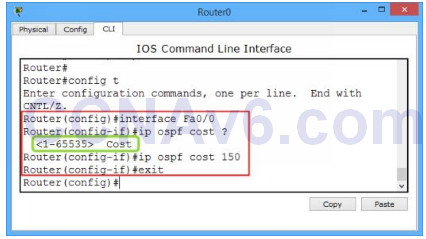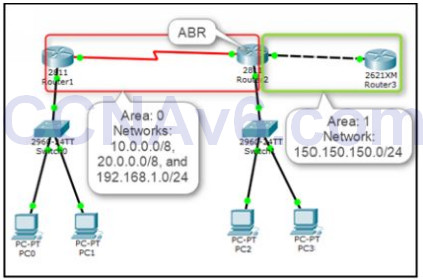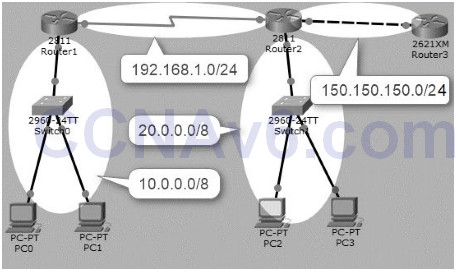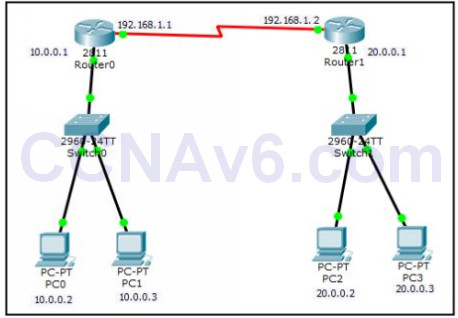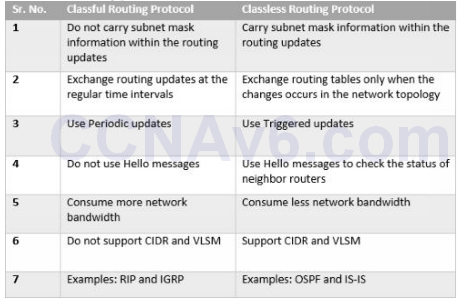Category: 120 Labs CCNA
120 Labs and solutions to give you the confidence and speed to pass the practical teste in your Cisco CCNA and CCENT exams: Exam CCNA 200-125, Exam ICND1 100-105, Exam ICND2 200-105
We will use the following topology to demonstrate how to perform redistribution between RIP and OSPF. We assume that all the devices have already configured with the appropriate IP addresses. 1. Once you have configure IP addresses, execute the following commands to configure RIP routing on Router1. Router1( …
We will use the following topology to demonstrate how to perform redistribution between RIP and EIGRP. We assume that all devices have configured with appropriate IP addresses. 1. Once you have configure IP addresses, execute the following commands to configure RIP routing on Router1. Router1( config)# router rip …
Route redistribution is a technique that allows routes learned by one routing protocol or algorithm to be advertised into another routing protocol or algorithm. For the simplicity and ease of management of an internetwork, it is always preferred to use a single routing protocol or algorithm. However, this …
Before configuring IPX routing, we assume that you know the basics of Novel IPX Protocol Stack. Once you are familiar with the basics of Novell’s IPX/ SPX model, you can start to configure IPX on the Cisco routers. To be honest, configuring IPX is more easy as compared …
In the previous exercise, we have discussed basics of the Open Shortest Path First (OSPF) protocol and how to configure OSPF routing. In this lab exercise, we will explain how the OSPF protocol decides the best (or shortest) path to a destination network and how to configure OSPF …
OSPF stands for Open Standard Path First. It is an open standard link state routing protocol. It uses cost metric to calculate the best route from source to destination for a given network. It supports unlimited number of hops and typically used for large networks such as Internet. …
EIGRP stands for Enhanced Gateway Routing Protocol. It is the Cisco-proprietary protocol hence can be used only on Cisco Routers. It combines the features of both the Distance-vector and link-state routing protocols and sometimes referred as Hybrid-protocol. It uses three separate tables called Routing table, Topology table, and …
RIP stands for Routing Information Protocol that is a distance-vector routing protocols. It uses hop count metric to calculate the best routing path. RIP is an open standard protocol means it can be used on any router. Since it supports only 15 hops hence it is used for …
Once, you are have configured basic configuration, such as hostname, IP address, password etc. the next step towards earning your CCNA certification is Configuring Routing. In the previous exercises, we have explained the basics of Routing and Routing Protocols. Now, we will start to perform routing methods. For …
The following question comes in the mind of every new candidate when they started to know various routing algorithm and protocols. Which routing algorithm or protocol should we use for a specific network? There is no straightforward answer to use a specific routing algorithm or protocol for a …
